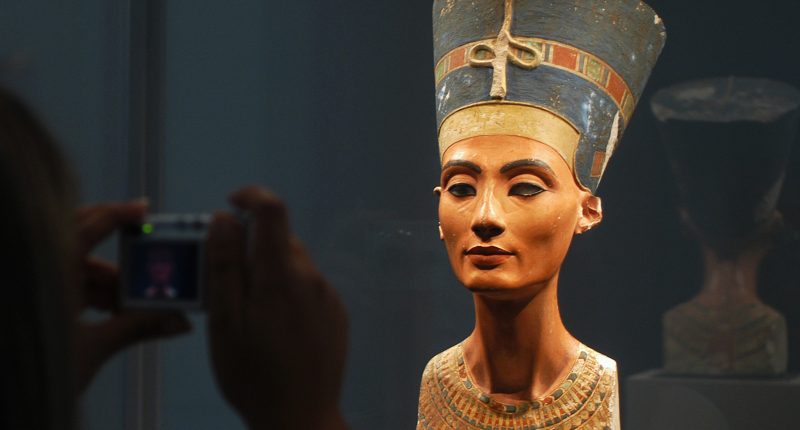THE long-lost tomb of ancient Egyptian queen Nefertiti may be hiding behind Tutankhamun’s.
That’s according to famed archaeologist Dr. Salima Ikram who exclusively told The U.S. Sun where she thinks the queen’s final resting place is.
Dr. Ikram is a professor at American University in Cairo and an author.
“There has been some debate as to whether the queen’s tomb is behind that of Tutankhamun but scientific tests have given ambiguous results,” she shared.
Queen Nefertiti was the wife of Pharaoh Amenhotep IV and lived during the 14th century BC.
The ancient queen is also the stepmother of the famous young pharaoh Tutankhamun.
She is often regarded as one of the most famous queens of Egypt.
A famous bust of her face is one of the most copied artworks from Ancient Egypt and resides in the Neues Museum.
The museum website states: “The timeless appearance of the face has become an icon of beauty over the past 100 years.”
Nefertiti’s bust was found in a workshop in Tell el-Amarna but her tomb has never been found.
Most read in News Tech
Archaeologists all over the world are interested in finding it.
Dr. Ikram revealed to The U.S. Sun where she thinks the tomb could be.
She said it’s “possibly behind Tut’s tomb or in the West Valley.”
The West Valley is part of the Valley of the Kings in Luxor, Egypt.
Most of the royal tombs found so far have been located in the East Valley.
Dr. Ikram stressed the importance of finding the tomb and how it could enhance what we know about Ancient Egypt.
She said: “To find an intact royal tomb will provide us with a huge amount of information about religion, traditions, and material culture.
“It might also elucidate the complex religious and religious world of the late 18th dynasty of Egypt.”
Adding: “There are so many unanswered questions about how Egypt’s history changed during the Amarna period that it is hard to parse out the truth.”
As for the Curse of the Pharaohs, a mythical curse that supposedly befalls anyone who opens the tomb of a pharaoh, Ikram is not concerned.
She told us that it’s “absolutely mythical.”











